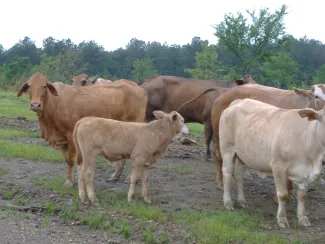Aldo Leopold, while in the throes of the great depression with environmental calamity looming, had the insight to write “The central thesis of game management is this, Game can be restored by the creative use of the same tools which have destroyed it—axe, plow, cow, fire, and gun.”
Oklahoma is more than 50% covered in rangeland and pasture or roughly 15,691,191 acres of rangeland and 7,378,566 acres of pasture. We sit at number four for plant biodiversity among the other states with 90% of the 2,600 species being native while producing some 5.2 million head of cattle. With 97% of Oklahoma's land being privately owned and livestock production being a major driver in Oklahoma’s economy, Leopold’s third point “the cow,” or rather properly grazing livestock, is vital to the health of our ecosystems and overall resiliency of our great state.
In wildlife management, grazing is a double-edged sword that if misused results in overuse and subsequently overgrazing. This undoubtedly does more harm to our wildlife habitat than good. Overgrazing can lead to soil erosion and vegetation degradation; it can cause migration disruption and habitat fragmentation as well as increase competition for resources used by wildlife.

Sound grazing management can complement and enhance wildlife habitat within rangeland, grassland, woodland, and forest communities.
However, when applied to the landscape, proper grazing can lead to an increase of forage with a higher nutritional quality, often bolstering wildlife populations. For example, in a study conducted on some south Texas ranches with proper grazing, white-tailed bucks were, on average, 20 pounds heavier when harvested vs those harvested on non-grazed ranches. Proper grazing protects rangelands by limiting invasive species and woody encroachment, attracting beneficial insects and grassland birds thus benefiting livestock by reducing pest related stress, reducing wildfire risks, and encouraging nutrient cycling.
When grazing is applied in a multi-species rotational system, ranchers can alter the time, intensity, and duration of grazing, rest period length, and type of livestock to create different vegetation heights, and the kind and number of plants. In some cases, very heavy grazing is necessary to provide needed habitat structure for some species. By increasing heterogeneity, grazing will increase overall wildlife diversity on the landscape. This type of system not only benefits the farm by making it more sustainable and resilient by diversifying the farm’s income; it can also build soil health and reduce nutrient loss thus reducing farm inputs. When well-managed it also reduces the need for land management by expensive heavy machinery and chemicals
While working in west Texas a smart man once told me that a quail's best friend is a rancher with bird dogs, this is because when the rancher is making management decisions, they aren't solely focused on of the pounds of forage produced or number of head sent to market but also of how their decisions will affect their chosen quarry. When ranchers, wildlife managers, and other stakeholders work together on this complex and nuanced issue, Leopold’s dream of restoring wildlife populations while making rural America economically profitable still holds true almost a century later!